Typically, Dungeons & Dragons is seen as a moody, mythic world of dark dungeons and fire-breathing beasts, acid blobs, dark elves, dwarves, and orcs. But a glance at the art for the latest rule book reveals a bold change in direction for Wizards of the Coast. (Read our celebration of 50 years of D&D for more.)
Dragon Delves, an upcoming anthology of ten adventures, is set for release on 8 July. This 'Monster Manual' reimagines the game's iconic dragons and the design that defines them, replacing high fantasy with whimsy and new creative styles, as well as introducing new artists to D&D. (Read our Procreate tutorials to learn how to paint your creatures.)
Nowhere is this art evolution clearer than in Baker’s Doesn't, a short adventure that swaps swords for spoons, kind of, and introduces a cake-obsessed Gold Dragon Wyrmling and a sugar-coated fantasy world.
I sat down with illustrator Andrew Kolb and game designer Justice Arman to explore how Dragon Delves and the pair's Baker's Doesn't adventure flips the D&D visual aesthetic and why sweet things sometimes come with a sinister twist or two (it is still Dungeons & Dragons, after all).
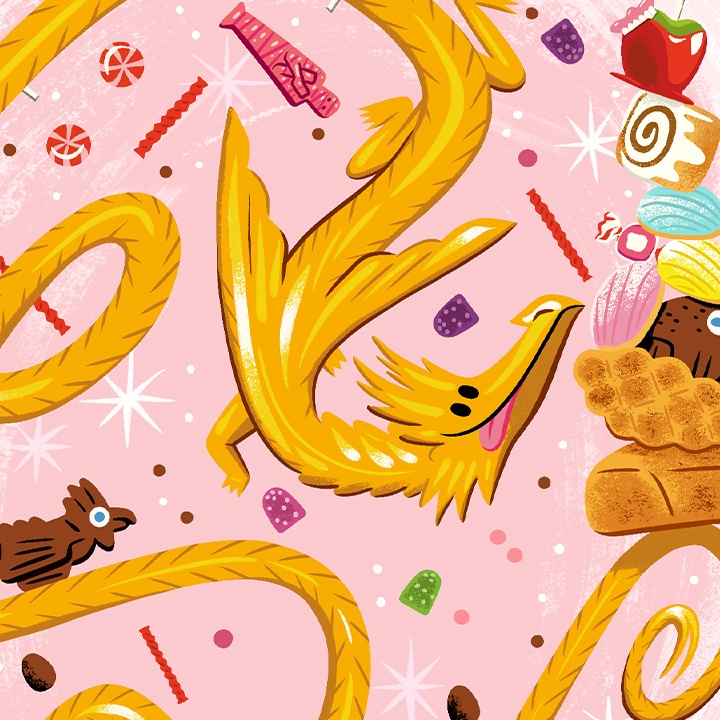
Finding a new D&D art style
“This is the first product that features adventures centered around all ten of D&D’s iconic dragon types,” Justice explains. “Each of the ten adventures is handled by a different artist, each with a unique style and tone to match the story’s theme."
Artists as diverse as Ed Kwong, Dominik Mayer, Justine Jones, and the black and white charcoal illustrations of Luke Eidenschink. "For Baker’s Doesn't, we got to combine our powers like the Wonder Twins, Andrew [Kolb] brought the art, and I brought the pastries.”
Baker's Doesn't leans into the classic Hansel and Gretel setup, but one revolving around a golden snack-loving dragon brought to life by Andrew's distinct artwork. “I wanted this to feel magical and a little dangerous,” says Justice. “I took a pastry intensive with my mom at the King Arthur Baking School, and that inspired the idea of combining fire, dragonfire, of course, with baking. What would that look like in D&D?”
Daily design news, reviews, how-tos and more, as picked by the editors.
The result is a D&D world filled with whimsical menace. On first glance, it looks twee and welcoming, but scared gingerbread men and menacing eyes lurking in the treeline suggest a darker underbelly, just like all good fairytales.

When it came to bringing this sugary adventure to life, Andrew Kolb’s distinctive picture-book style – clean, neatly angular line art with bold colour – was an unexpected but perfect fit. “I was surprised at how open and enthusiastic the team was,” he says. “Emi Tanji, our art director, told me straight up: ‘Don’t try to fit in, just do what you do.’ That gave me a lot of confidence.”
Justice backs that up. “Emi called dibs on Baker’s Doesn't immediately. After reading the one-sentence pitch involving a bakery and a dragon wyrmling, she said, ‘This is Andrew’s.’ She’d admired his work for years. It was just a perfect fit.”
Andrew began, as he often does, by sketching everything at once. “I work holistically. Even in thumbnails, I want to understand how characters and environments play off each other. If you know a villain will show up later, you can subtly hint at them earlier. It ties the whole visual story together.”
His design for the Gold Dragon Wyrmling embraced the existing D&D concept while pushing it in a new direction. “The silhouette reminded me of a sword flying through the air,” he tells me, smiling at the description. “I didn’t need to reinvent the dragon, just tweaked the proportions, heightened the experience, and leaned into that picture-book charm.”
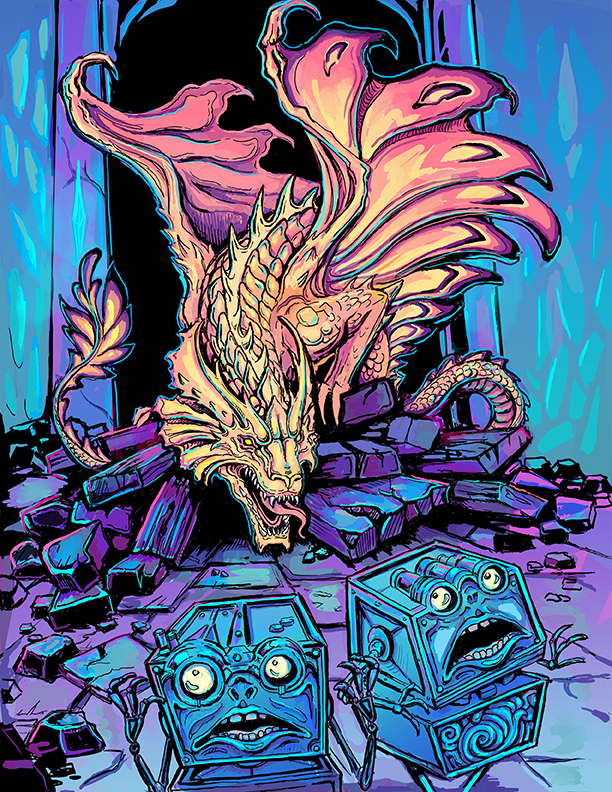
Making the art
Andrew's final art is digital, but the process starts with pencil and paper. “Sketching by hand still feels most natural. Once I scan it in, I can make edits, change a character’s expression, or tweak the tone. It’s perfect for a collaborative project like this.”
As we chat, it becomes clear that collaboration is key on a project like this. “D&D isn’t made by one person,” Justice says. “It’s like the game itself, a party of people supporting each other’s strengths. My wife even helped type up the adventure while we were road-tripping. She’s my first reader.”
Even though Baker’s Doesn't leans toward lightheartedness, there’s a layer of shadow, too. “Like any good fairy tale,” Justice says, “there’s dark humor under the surface. Growing up, I loved Courage the Cowardly Dog, that mix of sweet and strange. We’ve got that here.”
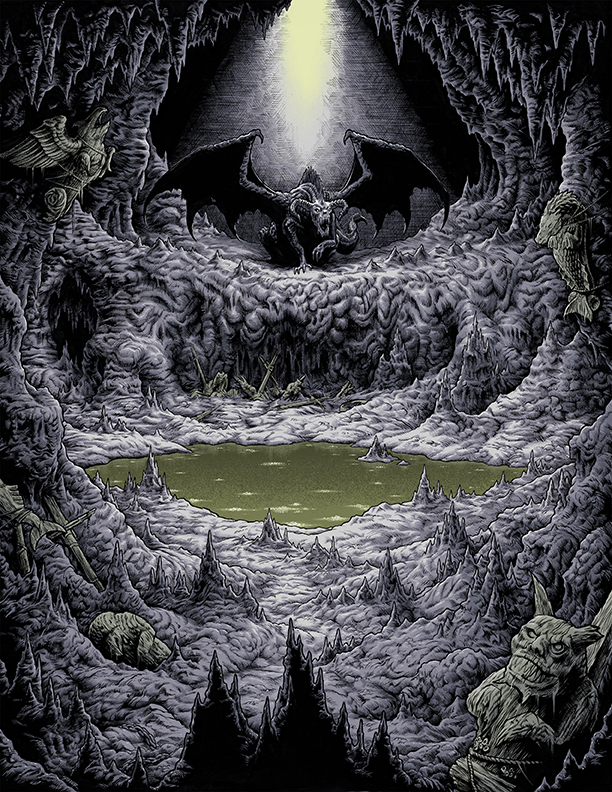
For Andrew, who runs his own Dungeons & Dragons games, the visual storytelling of the brand is a bridge between game mechanics and player imagination. “When I show my players an image, it anchors us. Everyone pictures things differently, but the artwork aligns the table’s imagination just before the next beat of the adventure.”
That’s part of what makes D&D special, he says. “It’s not just a game. It’s an experience tied to visuals, to memory. When I think back on great campaigns, I also remember the artwork.”
Both Justice and Andrew recognise that Dragon Delves isn’t just a one-off; it represents a broader evolution for D&D. “For the first 10 years of Fifth Edition, the art style was consistent,” says Justice. “This book breaks that open. We’re saying: here’s a celebration of many styles. And it means we can collaborate with artists who previously might have seemed outside the D&D mold.”
Andrew reflects on this shift: “I know my work is a bit of a departure, but it’s also part of the legacy. At one time, interior colour artwork was considered revolutionary. Now it’s standard. This is just the next step.”
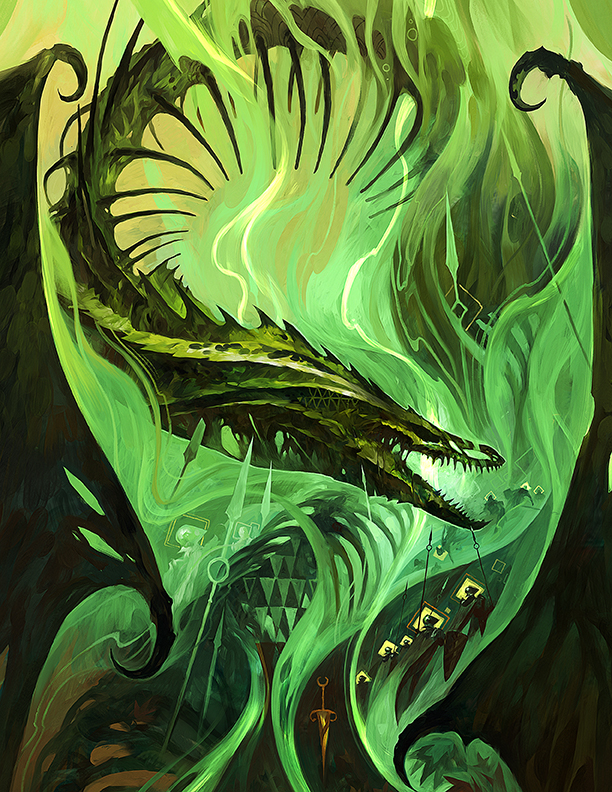
Be passionate to succeed
For those hoping to follow in their footsteps, both creators offer clear advice: share your work, collaborate, and lean into what you love.
“Start small,” Justice says. “None of our products are created solo. And you don’t have to do it alone. Find your party.”
Andrew adds, “Don’t create what you think you should be making. I didn’t chase a D&D style, I made what I love, and that’s what got me here. People can see when you’re passionate.”
With Dragon Delves, Wizards of the Coast is taking Dungeons & Dragons in a bold, colourful step forward, one filled with a mixed bag of art styles that revisualise some classic D&D tropes – frost giants, pirates, and dragons. But it's the sugar-dusted magic of Andrew and Justice's Baker's Doesn't that feels more important, both artistically – seeing D&D through Andrew's eyes is fresh – but also narratively, as Justice's writing is the perfect entry point for young adventurers.
As Kolb puts it: “If someone who played Third Edition runs this adventure for their kids? That’s the dream. That’s mission accomplished.”
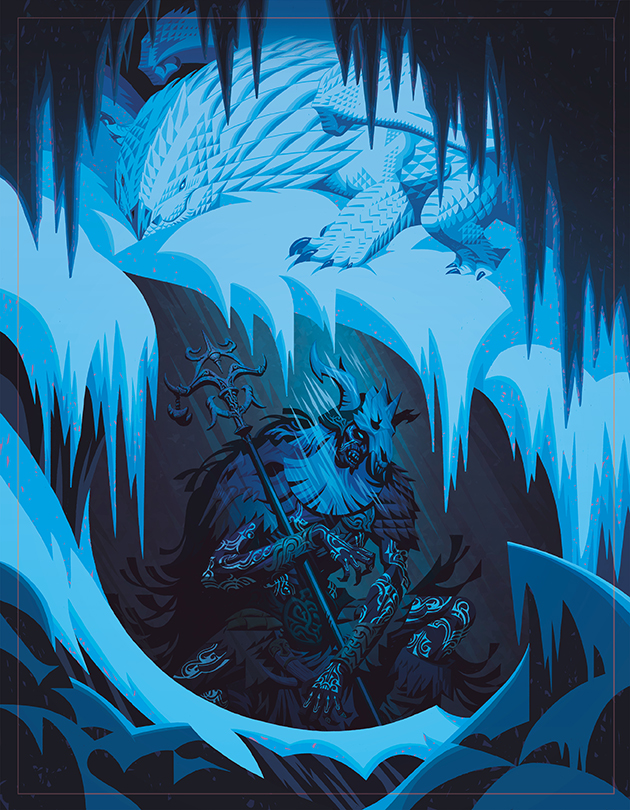
Pre-order Dragon Delves from the D&D online store. Love the art? Read our list of the best artists for more inspiration.

Ian Dean is Editor, Digital Arts & 3D at Creative Bloq, and the former editor of many leading magazines. These titles included ImagineFX, 3D World and video game titles Play and Official PlayStation Magazine. Ian launched Xbox magazine X360 and edited PlayStation World. For Creative Bloq, Ian combines his experiences to bring the latest news on digital art, VFX and video games and tech, and in his spare time he doodles in Procreate, ArtRage, and Rebelle while finding time to play Xbox and PS5.
You must confirm your public display name before commenting
Please logout and then login again, you will then be prompted to enter your display name.
